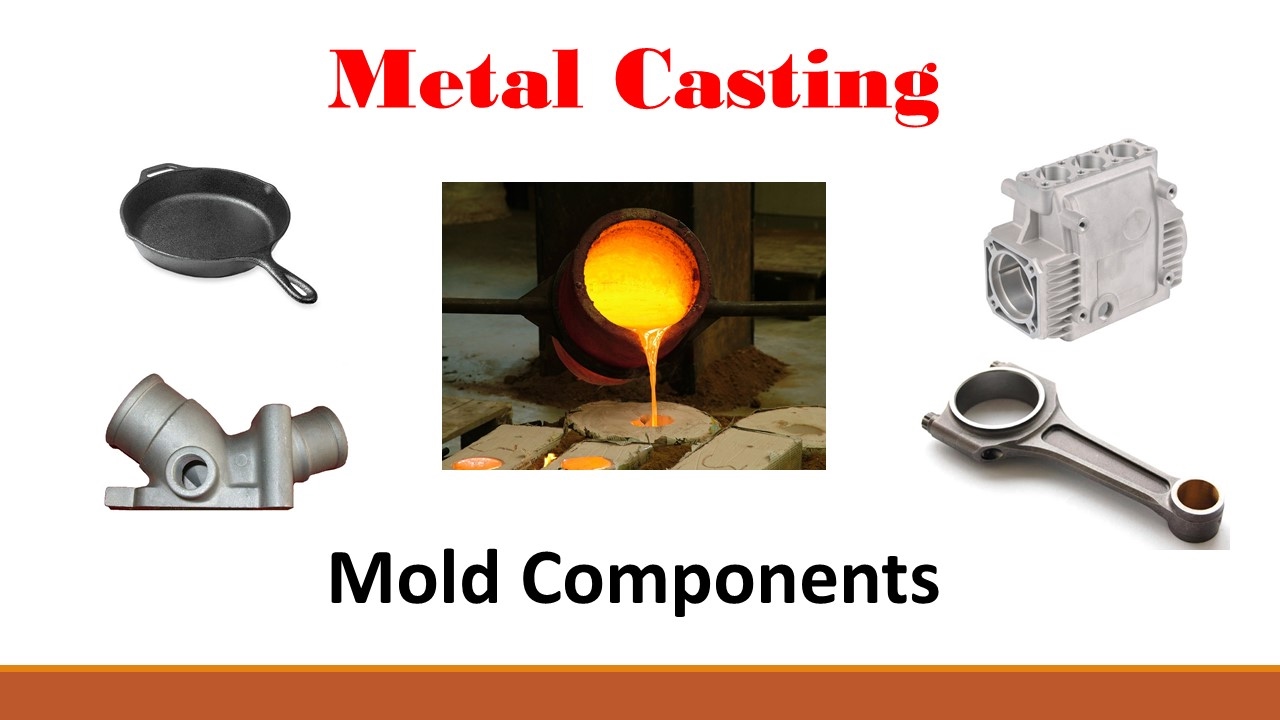
Week 4: Metal Casting Processes and Equipment
Book chapter 13.
Casting process is one of the earliest metal shaping techniques known to human being. It means pouring molten metal into a refractory mold cavity and allows it to solidify. The solidified object is taken out from the mold either by breaking or taking the mold apart. The solidified object is called casting and the technique followed in method is known as casting process. The casting process was discovered probably around 3500 BC in Mesopotamia. In many parts of world during that period, copper axes (wood cutting tools) and other flat objects were made in open molds using baked clay. These molds were essentially made in single piece. For making highly intricate jobs, a lot of time in making the perfect mold to the last detail so hardly any finishing work was required on the casting made from the molds. Indus valley civilization was also known for their extensive use of casting of copper and bronze for ornaments, weapons, tools and utensils. But there was not much of improvement in the casting technology. From various objects that were excavated from the Indus valley sites, they appear to have been familiar with all the known casting methods such as open mold and piece mold. This chapter describes the fluidity of molten metal, different casting techniques and various casting defects occurring in casting processes.
SLUSH CASTING
Slush casting is an extension of permanent mold casting or metallic mold casting. It is used widely for production of hollow casting without the use of core. The process is similar to metallic mold casting only with the difference that mold is allowed to open at an early stage (only when a predetermined amount of molten metal has solidified up to some thickness) and some un-solidified molten metal fall down leaving hollowness in the cast object. The process finds wide applications in production of articles namely toys, novelties, statutes, ornaments, lighting fixtures and other articles having hollowness inside the cast product.
PRESSURE DIE CASTING
Unlike permanent mold or gravity die casting, molten metal is forced into metallic mold or die under pressure in pressure die casting. The pressure is generally created by compressed air or hydraulically means. The pressure varies from 70 to 5000 kg/cm2 and is maintained while the casting solidifies. The application of high pressure is associated with the high velocity with which the liquid metal is injected into the die to provide a unique capacity for the production of intricate components at a relatively low cost. This process is called simply die casting in USA. The die casting machine should be properly designed to hold and operate a die under pressure smoothly.
SHELL MOLD CASTING
Shell mold casting process is recent invention in casting techniques for mass production and smooth surface finish. It was originated in Germany during Second World War. It is also called as Carning or C process. It consists of making a mold that possesses two or more thin shells (shell line parts, which are moderately hard and smooth with a texture consisting of thermosetting resin bonded sands. The shells are 0.3 to 0.6 mm thick and can be handled and stored. Shell molds are made so that machining parts fit together-easily. They are held using clamps or adhesive and metal is poured either in a vertical or horizontal position. They are supported using rocks or mass of bulky permeable material. Thermosetting resin, dry powder and sand are mixed thoroughly in a muller


